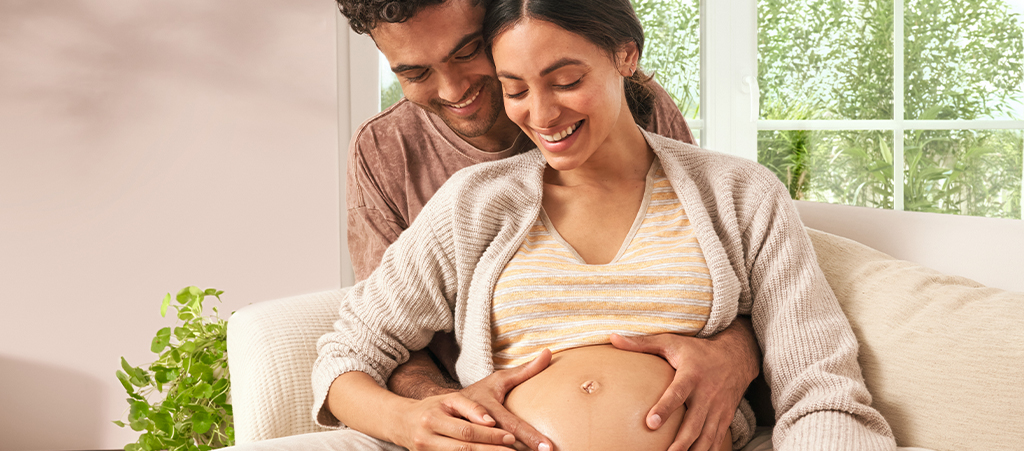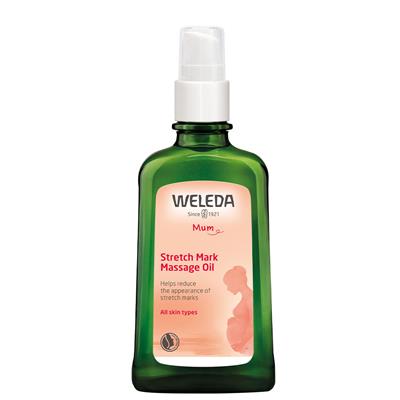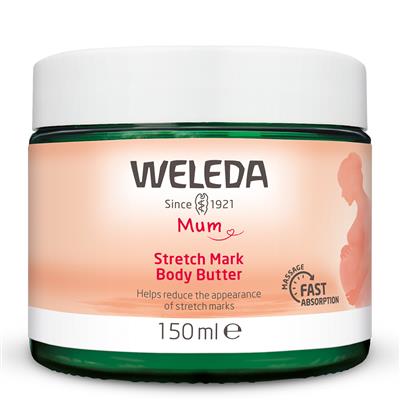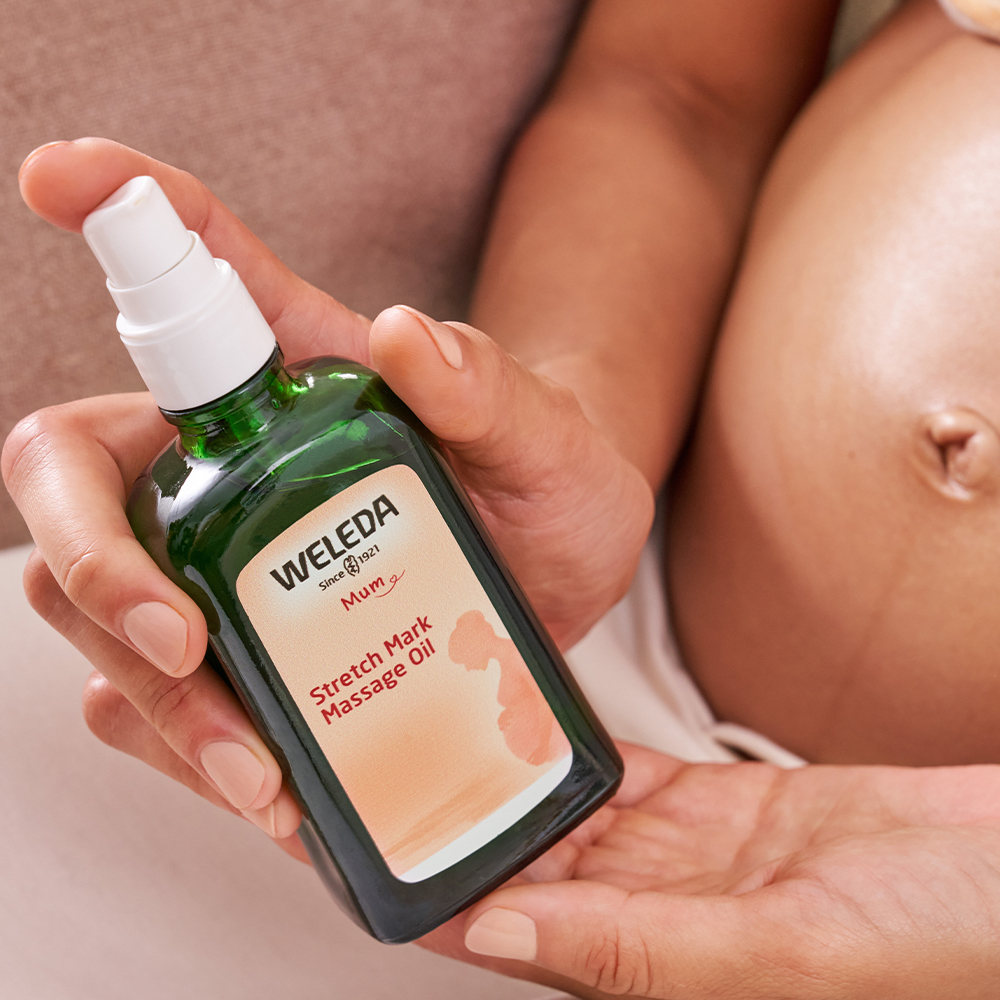
How and why to try pregnancy massage
Weleda's Baby Massage Consultant, Suzanne Yates, tells us all22 June 2022
Support your changing body and get in touch with your baby
Massage is not just a luxury in pregnancy; it’s a necessity! There is so much change happening both physically and emotionally. Massage supports both you and your baby through this special time.
• It offers care for your body, easing overworked muscles and strengthening weakened ones
• It supports your basic posture, easing common physical niggles
• It supports your blood and lymph flow, helping swollen ankles, wrists, breasts and helping legs feel lighter
• It helps breathing and relaxation
• Good quality oils help minimise stretch marks and nourish your skin
But perhaps most importantly of all massage offers a quiet space to be more aware of the changes going on inside your body and time to be with your growing baby. Touch is the first sense a baby develops. Both you and your baby can benefit from gentle nurturing touch. Massage is not just for pregnancy but will help prepare you for birth and your new life afterwards.
Overall Benefits of Pregnancy Massage
• Nourishes skin, tones muscles and connective tissues• Supports overall sense of wellbeing
• Helps with posture and to soothe minor niggles
Benefits of massaging your belly
• Touch helps connect you with your baby• Helps you get to know your new shape
• Supports deep breathing and relaxation
Preparing for massage
If you are using a product for the first time, it’s always good to do a patch test the day before, to check for sensitivity or skin reactions, as pregnancy can make skin hypersensitive.Find a comfortable relaxing space: you may want to light some candles or play some music. Wash your hands.
You can do the massage yourself or it can be a lovely way of involving your partner. Your other children may enjoy being involved with some of the tummy work. It should always feel comfortable. Different people like different amounts of pressure and prefer different strokes. Adapt and improvise to suit. Just what feels right for you.
Get your Weleda Stretch Mark Massage Oil and warm a little oil in your hands by rubbing them together and massaging around all your finger joints to relax them.
Stretch Mark Massage Oil 100ml
Item No.
106119
£20.95
Add to basket
Stretch Mark Body Butter 150ml
Item No.
106127
£21.95
Add to basket
Find a comfortable position:
Options for any stage of pregnancy
Lying on your side with cushions supporting your neck and legs. Sitting on a ball: helps fluid movement in your pelvis and works your abdominal and pelvic floor muscles.First trimester and postnatally
Lying on your back or sitting back in a comfortable chair.Second and third trimesters
It is good to use forward leaning positions, for example sitting or kneeling over cushions. These positions help relieve the pressure of your baby from your back. Do make sure your lower back is in a ‘neutral’ flat position, not hollowed by the weight of your baby.Massage oil can help soothe and moisturise the skin as it stretches to accommodate a growing bump. Massaging with a nourishing natural oil will help the connective tissues remain elastic – our best defence against stretch marks.
When can I start?
You can begin in your first trimester when women can feel slightly nauseous or sensitive to touch. Simply placing your hands on your abdomen and breathing gently, out and in, may feel enough. As your baby grows, then you have a bigger area to massage and from about 14 -16 weeks you may start to feel your baby move and respond.Tummy massage can also help postnatal recovery, but postnatally be gentle while you are still bleeding. If you have a Caesarean scar don’t touch the area while it is still healing. Once it has healed, gentle massage helps break down scar adhesions to iron out any little bumps.
How to perform a tummy massage
1. Begin by placing both hands on your abdomen, and with each out-breath allow your breathing to slow and deepen. Wrap your hands over your tummy as if gently hugging your baby. With each in-breath feel your hands loosen over your tummy as if you are giving your baby space. Feel the relaxation of each out-breath through your whole body and soften any areas of tension.2. Now warm the oil in your hands by rubbing them together. You can tell your baby that you are about to massage them; this is a cue that they can relate to when they are born.
3. Next, rub the oil all over your tummy in a clockwise direction (down your left side, across the bottom and up the right side and over the top) from your navel and spiralling out, and then back in. This supports the natural movement of your intestines. Go at whatever speed feels best for you. This will probably be fairly slow and rhythmic.
4. Next, with each slow out-breath, pause and give a little pressure on each area. Some areas need more pressure and others less. Move on to another area when it feels right to you, there’s no rush. You may even recognise different parts of your baby’s body.
5. Next place your hands on your hips and gradually draw them together to meet in the centre line of your abdomen. Here give some gentle pressure as you breathe out. Repeat as often as you wish, and cover the whole length of the centre line.
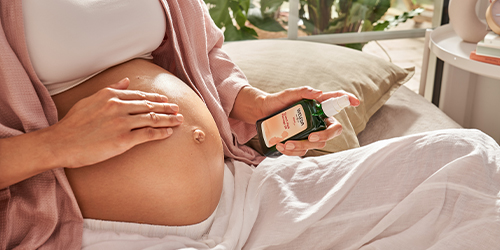
How partners could help
It can feel really nice to do these strokes with one hand, while keeping the other hand still on the lower back, wherever feels most comfortable for the mother.It is a lovely way to see how your baby responds: he or she may even follow your hands round or give a little kick. You might feel their spine, a wide flat area, or their hands and feet. You can talk or sing to your baby while you are doing this.
If you’re interested to find out more about massage for pregnancy, you might like to read our article on Perineal Massage next.
Suzanne Yates:
BA(Hons) PGCE(PCET), MRSS(T), DipHSEC, DipAPNT, CNHC registered, AOBTA(Honorary)As a pregnancy massage specialist and shiatsu practitioner, Suzanne has been developing a holistic approach to maternity since 1989. She established ‘Well Mother’ in 1990 and today teaches worldwide and has published several books.

